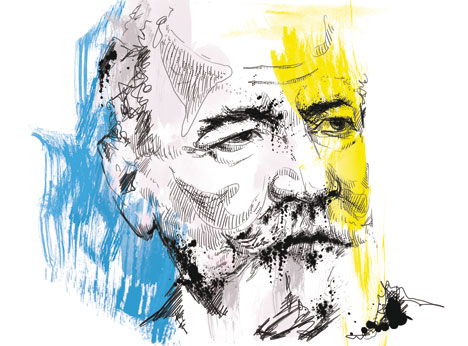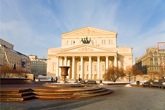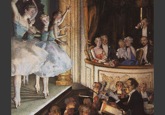Nemirovich-Danchenko: A life dedicated to theatre

Drawing by Natalia Mikhaylenko
The name of the renowned director Vladimir Nemirovich-Danchenko (1858–1943) is usually mentioned in conjunction with Konstantin Stanislavsky’s. This is justified: they founded the Moscow Art Theatre together, staged shows together and worked side by side.
In his youth, Nemirovich-Danchenko acted in amateur productions, and he was destined for a great future. However, he did not care for the theatre he saw in late 19th century Russia. He thought directors were too enmeshed in the classics and that more contemporary plays needed to be staged.
In his opinion, performers acted too grandiosely and enjoyed declaiming. In addition, the repertoire was not suitable: the plays’ themes were petty, and the characters and dialogues were laboured. Russian theatre had diverged from life and urgently needed to be reformed, Nemirovich-Danchenko said. He wanted simplicity, realism and progressive ideas in theatre.
Stanislavsky held the same views. After they found out about each other, Stanislavsky and Nemirovich-Danchenko decided to meet and ponder the creation of a new theatre.
The historic meeting took place at the Slavyansky Bazar restaurant and lasted for 18 hours. It was like a war council before a decisive battle. The waiters fell asleep in the process of serving the two men. Ultimately, the two agreed to found a new theatre, the Moscow Art Theatre (MAT).
Nemirovich-Danchenko and Stanislavsky decided to stage only plays by contemporary authors who raised incisive issues, such as Chekhov and Gorky. The performers’ acting needed to be as lifelike as possible.
The MAT quickly became Russia’s most renowned theatre. Nemirovich-Danchenko managed the literary side, but he gradually also became a director. He demanded that the actors immerse themselves in their characters, studying the milieu in which the plays’ heroes lived.
At one point he and Stanislavsky staged “The Lower Depths,” Gorky’s work about homeless people. The subject was scandalous for the time — surely it was a joke to portray a shelter and its indigent inhabitants in a temple of art.
In order to achieve verisimilitude, Nemirovich-Danchenko suggested that the whole troupe visit the well-known flophouses on Khitrovka — in Moscow there was such a slum, akin to New York’s Harlem.
Their guide was the celebrated journalist Gilyarovsky. What the actors saw made such an impression on them that they gave a spectacular performance that the audience rewarded with a thunderous ovation.
In productions at the Art Theatre, everything mirrored life. Nemirovich-Danchenko and Stanislavsky clung to this principle. Even the sound effects were genuine. For example, for one Chekhov play, an actual dog barked, birds twittered and a cricket chirped backstage.
After the revolution, Stanislavsky and Nemirovich-Danchenko’s theater became the leading dramatic theatre in the country. It is known that Stalin admired it and frequently attended shoes there. A government act granted Nemirovich-Danchenko and Stanislavsky lifetime pensions.
They had a right that was unique for the era: they could unrestrictedly travel abroad. Taking advantage of this, Nemirovich-Danchenko signed a contract with United Artists, a Hollywood studio. He wrote screenplays and rehearsed. However, none of his work made it to the screen. He returned to Moscow saying, “Creating is possible only in Russia; you need to sell in America and relax in Europe.”
Nemirovich-Danchenko thought that not only the stage, but also the backstage area and the entire theatre needed to look presentable. Yet many actors were disorderly and unkempt.
“Nonstop smoking, cold food, sausage, herring, gossip, vulgar flirtation, backbiting, jokes” and of course, vodka were the bitter enemies that Nemirovich-Danchenko ruthlessly battled.
In both life and theatre, he prized truthfulness and trustworthiness above all. At Nemirovich-Danchenko’s productions, spectators swooned, and in the heroes they recognized themselves, their relatives and other people they were close to. Such was the illusion of genuineness. Before the Art Theatre was born, performers did not act in this way. This is known as great art.
All rights reserved by Rossiyskaya Gazeta.
Subscribe
to our newsletter!
Get the week's best stories straight to your inbox

